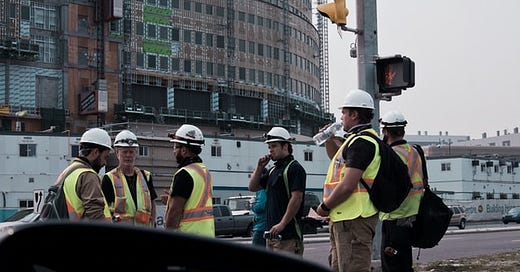These past few weeks I’ve seen workers start to re-engage within the workforce. I’ve noticed there aren’t as many for hire signs everywhere I looked. The hours businesses are open started to return back to normal hours. They no longer have the random signs that they’re closed today due to staffing shortages.
I had more people contact me in December to see if I was looking to hire than I had in the past two years combined. That seemed awfully odd as I have nothing posted anywhere that we were looking to hire.
After talking to a handful of small and medium sized business owners they indicated that they were seeing some movement in the filling of jobs. People weren’t breaking down the doors, it was more like a small trickle. But some positive movement!
Their assessment was similar to mine in that some were waiting until after the holidays were over to get back to working. Traditionally a harder time of year for people as much of the country gets into winter and the bills from Christmas spending come due.
With the stimulus ending and heading into the holiday season the personal savings rate continues to spiral downwards. It has hit its lowest level since December of 2017.

All the savings that was accumulated over the pandemic has been spent. Poof! It’s all gone! Or the best way to view that, is it was put back into the economy in some way. Hence the reason the stock market and companies earnings are doing so well.
The effects of the dwindling savings rate has boosted consumer spending. The Personal Consumption Expenditures (PCE price index), reflects changes in the prices of goods and services purchased by consumers in the United States.

It’s evident by the consumer spending data that we’re making up for all that lost time during the pandemic. The gap has widened between incomes and spending. Income has gotten back on trend while spending has accelerated versus prior to the pandemic.
People still love to buy things. Sam Ro noted the following last week in his TKer newsletter about the holiday sales data.
🛍 Holiday sales jump: Spending from Nov. 1 to Dec. 24 rose 8.5% from a year ago, according to Mastercard SpendingPulse. From the AP: “Holiday sales were up 10.7% compared with the pre-pandemic 2019 holiday period. By category, clothing rose 47%, jewelry 32%, electronics 16%. Online sales were up 11% from a year ago and 61% from 2019. Department stores registered a 21% increase over 2020.”
We’re clearly seeing unsustainable levels of consumer spending. It will eventually stabilize. Everyone has been buying anything and everything, taking trips, going to concerts, traveling to see family/friends etc. Can you blame us after all we’ve dealt with?
The case for getting people back to work has been debated about for most of 2021. There were theories why there was such a shortage and everyone was looking for an answer. Then they could have the quick fix. Nobody has any patience. They want everything immediately.
Truth is there wasn’t a quick fix. We’re going to start seeing workers fill more jobs. This will start showing up in the data in the month ahead. The spending versus income data is a clear indicator of the tail that follows this and how things are brought back in line to a normalizing of trends. Savings and stimulus spurred spending. With the ending of the stimuluses to help spur spending, that now has to be replaced by incomes.
We’ve seen the free market over time heal. It’s adjusted and adapted just as you and I have had to adapt and adjust over the past two years. The worker shortage was another bump in the road that the pandemic caused, which will soon be in the rear view mirror just like so much else.
Thank you for reading! If you enjoyed Spilled Coffee, please subscribe and/or give a gift subscription for others.
Spilled Coffee grows through word of mouth. Please consider sharing this post with someone who might appreciate it.


